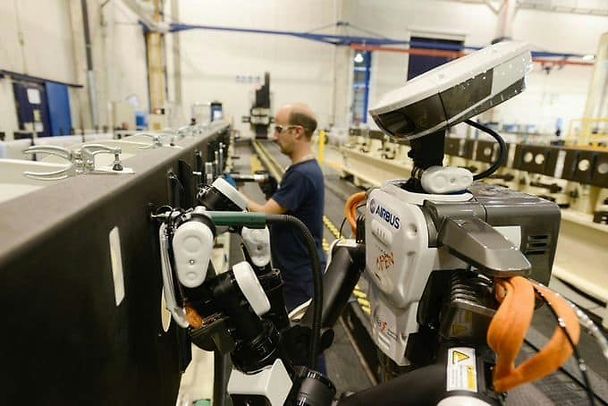Redefining workmates

With automation, our goal is not to replace humans, but redefine workmates; workmates who are already saving time on traditional processes for identifying and diagnosing faults, issues or defects on the production line. We’re moving towards smart robots performing repetitive, heavy or physically demanding tasks, freeing up employees to assume functions that require greater skill or to work on more tasks.
Our robotics division envisages a future in which fully autonomous robots will be able to assess situations and find solutions. But before they can, we are working to create a new generation of humanoid robots that can safely interact with humans, imitating what they have seen, learned or been taught. We’re making robots smarter, which is an essential stage in the automated robot’s development.
Since 2015, we have released robotic applications at least once a year and will continue to do so. These applications are enabling us to move from the introduction of safe, lightweight robots with a single arm to collaborative units with greater freedom, able to solve more complex applications in hard-to-access areas.
Our automated robotic concept of the future sits alongside a vision of wearable robotic tools and exoskeletons [GP1] that boost workers’ abilities. These devices help to lift heavy loads or work in difficult spaces, potentially enabling a user to lift enormous objects with just one finger. The idea is based on the Steadicam harness used by cameramen, helping the wearer to manipulate certain elements by improving ergonomic conditions.
To give perspective to these challenges and achievements: in the automotive industry, a vehicle is produced every minute, with approximately 1,000 vehicles manufactured a day. In this environment, a robot has 40 seconds to do its job and the complete programming of this task takes about a month. By comparison, at Airbus, we produce 1.5 aircraft a day, with tasks taking several hours. The challenge of programming these tasks is vast. It requires mobile, collaborative robots and simple, efficient programming.
The challenges we are identifying and overcoming are the future of robotics, and will transform the efficiency and productivity of manufacturing.